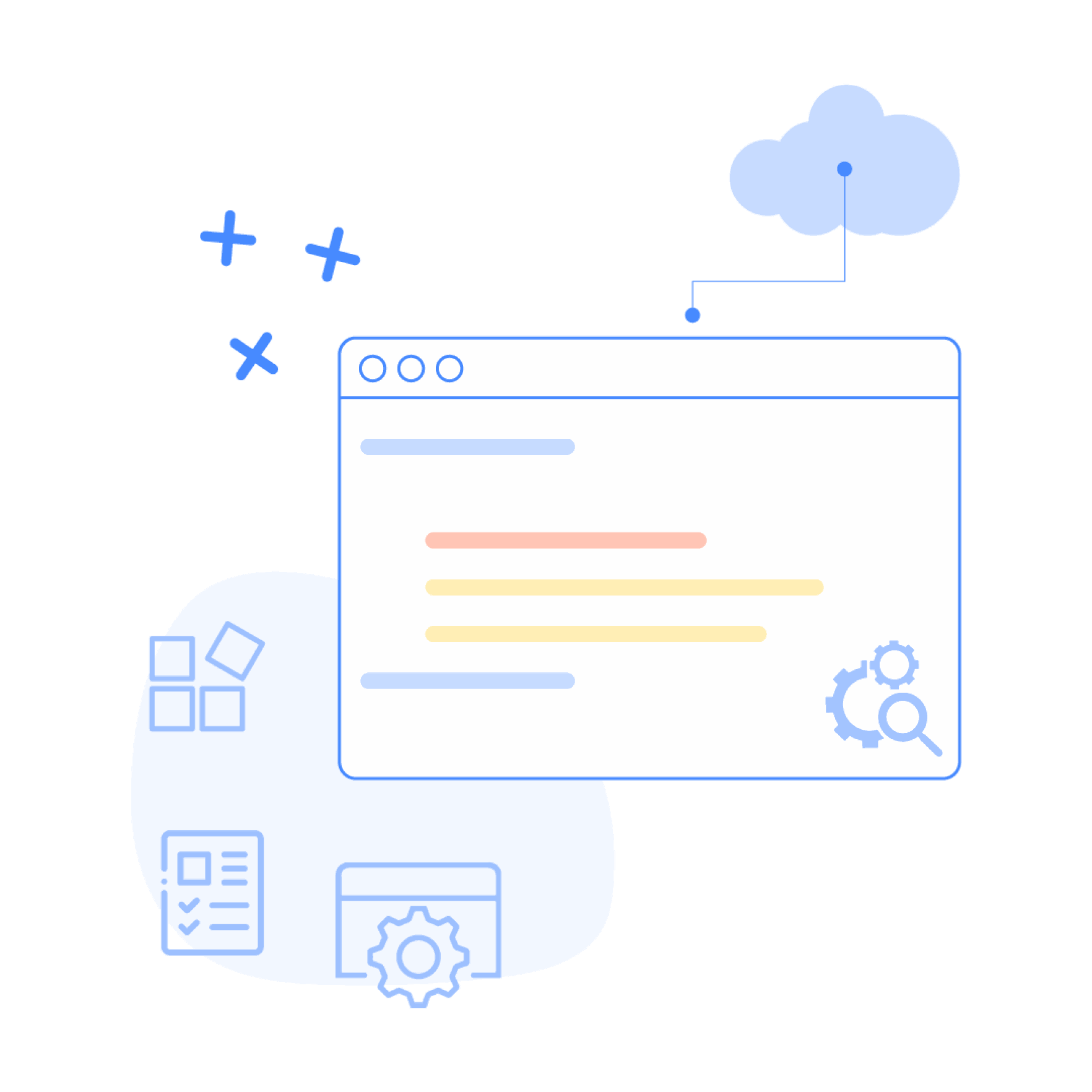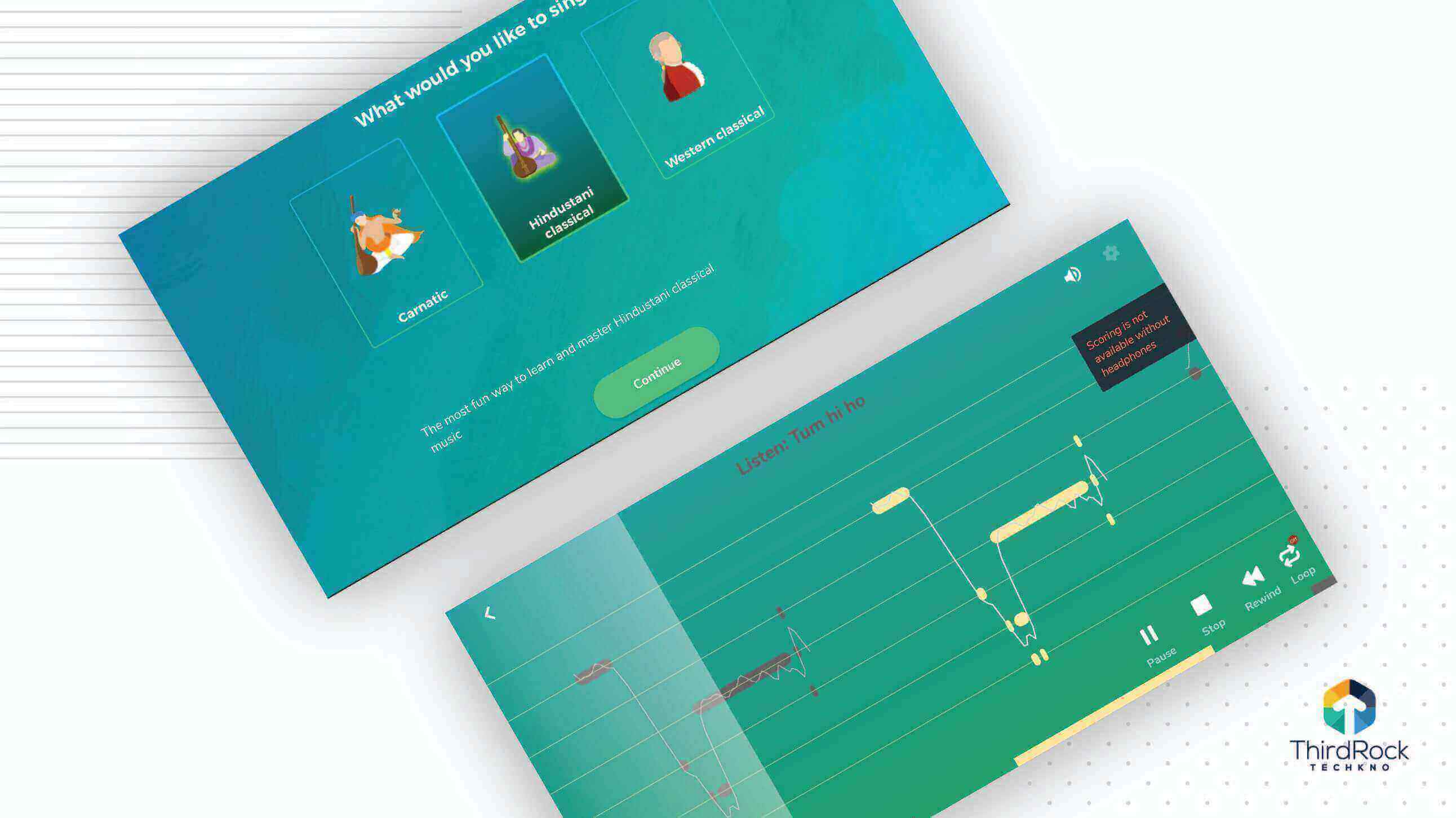
Our AR Services
- 1. 2D / 3D content loading on AR environment.
- 2. Location based AR development
- 3. Floor / surface detection AR app development
- 4. Face detection AR app development
- 5. Update to new technology in AR app development
- 6. iOS AR App development
- 7. Android AR app development
- 8. Maintenance and Update AR app development
- 9. UI/UX update app development
Why Choose Us As Your AR Development Company
Experienced Developers
Our highly-qualified AR development experts specialize in building customized, creative and highly-interactive web and mobile applications. Whether you are a startup or an SME, our experts will get the job done.

Trusted Delivery Methods
We employ the agile methodology to keep you in the loop. Throughout AR development and mobile development, we focus on delivering solutions that meet your business goals, timeline, and budget.
Competitive Rates
Whether it is AR development or mobile development, we offer the most competitive rates on the market. Our personalized services meet different budget needs of our clients from across the globe.
Transparent Work Approach
Our AR development company ensures complete project visibility right from the time you approach us with your needs. We use email, phone, Skype, Slack, and other mediums for regular communication with our clients.
Customer Satisfaction
Our designers, developers, quality analysts, and a project manager – all strive for customer satisfaction. We deliver AR app development services that align with our clients’ needs.
Client Testimonials
Our WORK speaks louder than our WORD. Find out how we helped clients overcome challenges and succeed.

Smoovr
Very good communication at all stages. Always prompt to reply. Excellent quality of work. The team at Third Rock Techkno was communicative, responsive, and accommodating as they produced high-quality work.
Jonathan Wood, Smoovr
Ontime
It was a pleasure working with the TRT team. Prior to contracting this group, I had a system created that was absolutely terrible and poorly developed. I also worked with a few freelancers that couldnt cut it either. TRT was actually able to execute on our concept and have built a truly solid system for our company.

Karl Pierre, Ontime
Highlights Of AR Development
Marker Detection
The marker detection technique is used to display content on the detected marker. Ideally, the marker is a 2D image that can be detected /scanned in the Augmented reality. Marker detection works based on the pre-defined image.
Markerless / Floor Detection
Markerless or floor detection works without a marker. In this case, when we need to display Augmented reality content. That content will be displayed on the floor.
3D Object Detection
3D object detection works as the 3D marker of your object. In this case, you can track your 3D object and display Augmented Reality content.
Face Detection
Face detection is a unique way to display augmented reality. In face detection, your face will be considered as a marker so you can render some content on the face.
Recent AR Development Blogs

How to Choose the Right Mobile App Database for Your Application?
With the advent of technology, many options are available in the market as far as mobile app databases are concerned. Therefore, when developers begin a new project, choosing the correct database becomes tough. An accurate database is an integral part of app development as it helps in many things, such as adding newer features, building a brand value, and more. Every mobile app development process has a different set of requirements and functions. So, the selection of the database should be based on its ability to store various kinds of the required information. The entrepreneurs and developers must understand that different databases have different priorities. Therefore, it is necessary to amalgamate the app requirements into the best mobile app database so that it can significantly impact its performance. Here in this blog, we will understand the nitty-gritty of selecting the correct mobile app database to formulate the app development process. In addition, we will also see the best practices that help in streamlining the selection process. Top 5 best databases for mobile app There is a plethora of iOS databases and Android databases that assist in developing state-of-the-art apps. We have listed some of the best databases to help select the right one per the mobile app’s requirements. 1. MongoDB Realm: The primary purpose of this database is to build and scale the mobile application in a syndicated and effortless manner. In addition, this database is a fully managed backend service that makes top-rated offline mobile applications. It then bridges the data and information between the cloud and Realm mobile database. See More: How to Write a Mobile App Business Plan 2. Elasticsearch: If your mobile application is subjected to a large amount of data daily, Elasticsearch must be your mobile app database. Its USP is to fetch faster results from a large bucket of inventory items without any lag in the process. Furthermore, it is profusely used as a distributed text search engine. Its quality to fetch faster results assists the mobile app in working with large datasets efficiently in real-time. 3. Neo4j: The feature that differentiates Neo4j from the rest of the mobile app databases is its native graph database. The native graph allows the database to deliver excellent performances and maintain the data relationships. In addition, the database is helpful for skilled mobile app developers as it renders in-depth analysis for deeper context and fast resolving of queries. 4. Memcached: It is a multi-threaded cache system that is distributed. The primary purpose of Memcached is to cache the objects, eventually lessening the load on the database. Also, with less database load, the overall processing speed of the application increases. 5. Couchbase: Couchbase is known for lending great iOS databases to mobile apps as it is a complete stack NoSQL database. It also supports offline synchronization to the apps, query capabilities, and full CRUD. On top of that, the Couchbase mobile app database can run locally on devices. How to Choose a Database for Your Mobile Apps? Now that you know the most prevalent mobile app databases in the world and their advantages, it is time to see the methods that will help you choose the right one. These essential considerations would assist in understanding the mobile app development requirements and processing the selection on that basis. 1. Storage and size of the data Complete knowledge about the data size is an important criterion that helps in selecting the correct mobile app database. Data size relates to the amount of information the mobile app must store and retrieve. It would also include some critical information necessary for the mobile app to function in an organized way. It is also necessary for the entrepreneurs to understand that can be stored in the app without negatively impacting its functions depending on different factors such as: * Structure of the data * Vendor-specific optimization * Parting the data across different files 2. Structure of the Data Entrepreneurs should understand that different mobile applications are built on other app development frameworks. A strong framework will streamline the mobile app solution allowing the app to deliver better results. Therefore, it is necessary to understand what the role of data structure is and how it can be retrieved during app development. It is necessary to have an appropriate mobile app database as if there is a mismatch, the app will face glaring hurdles in the long run. Misalignment in the database would also cause delays in the development process and make the entire process inefficient. The data structure of the mobile app is dependent on its overall functionality. Therefore, it is necessary to align the data structure and app requirements for the application’s smooth functioning. See More: Mobile App Development - Step by Step Guide for 2022 3. App Database and Platform Support With various popular platforms available, the process of app launching has no longer remained a straightforward process. The different platforms will help the app to reach the target audience and enhance the user experience in intuitive ways. The mobile app database will also vary if the app is transcended from smartphones and reach IoT and wearables. Moreover, the entrepreneur must be sure about the nature of the app that will determine its launching platform. The app can be launched on one or multiple media, various devices, etc. Before finalizing the app launching process, care should be taken about its future expansion. This is because if the entrepreneur has a niche audience in mind, they will concentrate on a single platform. On the other hand, if the expansion plans are significant, the scale of app launching might change. 4. Speed and Scalability of the Mobile App Database App scalability is by far the most crucial factor that helps in deciding the mobile app database. Business organizations who wish to increase the capacity of their app by adding new features must take note of the scalability of the mobile app database before finalizing it. Also, if there are constant updates in the future, the app’s database engine will have to be more efficient. In addition, whether it is an iOS database or Android, it must be able to utilize all resources and handle different processes simultaneously. 5. Rectifying the data conflicts between devices If the mobile application modifies similar data on various devices, there might be a situation where there can be conflicts. Therefore, before finalizing the database, make sure that it can resolve the issues with the help of a support mechanism. The flexibility a mobile app database shows in conflict resolution must become a potent yardstick in its selection. The modern-day app databases these days are equipped with automated conflict resolving techniques. It is done essentially using an external system through the cloud or human intervention. What are the best practices for using Databases in Mobile Applications? Below are some of the leading best practices that will help business organizations to choose the best mobile app database for their application. 1. Select Database That Uses MVCC Method MVCC stands for Multiversion Currency Control (MVCC), which assists the app in simultaneously accessing threads and the processes involved without blocking them. MVCC allows the reader to read and write in parallel while the writer makes any changes. The readers would also get a view of the snapshot before any changes are made from the writer’s end. Therefore, selecting a mobile app database that uses the MVCC method will streamline the entire app development process in the long run. 2. Predictive Caching to Improve App’s Performance Through Predictive Caching, the entrepreneur would get a clear idea about the patterns in which their target audience uses the app. After analyzing the user patterns, the entrepreneurs can analyze the customer segment and render them with more personalized services. The USP of Predictive Caching is that the information is available and cached locally. Therefore, the user doesn’t have to log in to the app frequently. Moreover, with the help of MongoDB Realm, the developers can serve the users with synchronized predictive-cached data. See More: Top Elearning Mobile Apps With Essential Features in 2022 3. Use Caching Databases to Reduce Load It is always advised to add a caching layer to prevent the recurrence of the same data. This will not only reduce the load on the server but also enhance the app’s overall functionality. Along with handling multiple requests, the extra caching layer would allow the app to work with low latency. Mobile app databases such as Memcached should be used in this scenario. 4. Low Latency is a Crucial Factor If you are developing a gaming or real-time app, low latency becomes a crucial factor. High latency (more than 500 ms) would distort the overall customer experience in such apps and leave a wrong lousy impression on them. Business organizations must also understand that optimizing the latency is a continuous pro, and each database would be different. Although there are many ways to reduce the latency, replication of the mobile app database remains the most popular one. Below is the list of leading mobile app databases that have lower latency than the industry norm: Amazon DynamoDB * PipelineDB, SQL database for streaming applications * PostgreSQL for transactional operations in real time * MongoDB Realm RethinkDB built for real-time application Final thoughts The realm of mobile app development is a constantly evolving space. Therefore, it is necessary for the business houses to be on the top of their game while selecting a mobile app database. Along with being flexible, the database must be aligned with the mobile app requirements to get the best results. We at Third Rock Techno have a wide range of experience in serving multiple clients have different app development requirements. Whether it is app scalability or rendering customized iOS database and Android database solutions, our skillful team can deliver stupendous results. Check out our work portfolio page to understand in-depth of our company’s process.

Using SwiftUI Environments Values to change Tabs programmatically.
In this post, we will explore the Environment Key and EnvironmentValues to achieve the programmatic tab switching in TabView. Lets start with the empty SwiftUI template from the Xcode and Create new SwiftUI view named AppTabView.swift. Define AppTabView Here we define our tabs in AppTabView like below. struct AppTabView: View { enum Tab { case profile case bookmarks case settings } @State private var selectedTab: Tab = .profile var body: some View { TabView(selection: $selectedTab) { ProfileView() .tabItem { Image(systemName: "person") Text("Profile") } .tag(Tab.profile) BookmarksView() .tabItem { Image(systemName: "book") Text("Bookmarks") } .tag(Tab.bookmarks) SettingsView() .tabItem { Image(systemName: "gear") Text("Settings") } .tag(Tab.settings) } } } Here you can see we have used the .tag modifier in order to TabView to switch the current tab. If we use @SceneStorage("selectedTab") instead of @State, then we can get some level of state-restoration behaviour. Now below is the contents of the ProfileView, BookmarksView and SettingsView. struct ProfileView: View { var body: some View { NavigationView { List { Button("Bookmarks") { print("Switch to Bookmarks Tab") } Button("Settings") { print("Switch to Settings Tab") } } .listStyle(InsetGroupedListStyle()) .navigationTitle("Profile") .navigationBarTitleDisplayMode(.inline) } } } struct BookmarksView: View { var body: some View { NavigationView { List { NavigationLink(destination: BookmarkDetailView()) { Text("ICE") } Button("Settings") { print("Switch to Settings Tab") } } .listStyle(InsetGroupedListStyle()) .navigationTitle("Bookmarks") .navigationBarTitleDisplayMode(.inline) } } } struct SettingsView: View { var body: some View { NavigationView { List { Button("Profile") { print("Switch to Profile View") } Button("Bookmarks") { print("Switch to Bookmarsk View") } } .listStyle(InsetGroupedListStyle()) .navigationTitle("Settings") .navigationBarTitleDisplayMode(.inline) } } } Now we have the our basic tabs setup, now we need some way to pass the button press action to super view ( AppTabView in our case ). So we can use the EnvironmentKey and EnvironmentValues here. So let's start defining our EnviromentKey named CurrentTabKey like below. struct CurrentTabKey: EnvironmentKey { static var defaultValue: AppTabView.Tab = .bookmarks } To use above EnvironmentKey we need to extend the EnvironmentValues like below. extension EnvironmentValues { var currentTab: AppTabView.Tab { get { self[CurrentTabKey.self] } set { self[CurrentTabKey.self] = newValue } } } Now we can use this CurrentTabKey like below. ... TabView(selection: $selectedTab) { ProfileView() .tabItem { Image(systemName: "person") Text("Profile") } .tag(Tab.profile) .environment(\.currentTab, selectedTab) ... And in the ProfileView we can use the environment property wrapper like below. struct ProfileView: View { @Environment(\.currentTab) var tab var body: some View { NavigationView { List { Button("Bookmarks") { tab = .bookmarks } Button("Settings") { tab = .settings } } .listStyle(InsetGroupedListStyle()) .navigationTitle("Profile") .navigationBarTitleDisplayMode(.inline) } } } Here we can use the environment variable in our button action. But... Cannot assign to property: 'tab' is a get-only property To solve this, we need to recall the two way data communication in SwiftUI. For this SwiftUI has property wrapper called Binding. Set CurrentTabKey So we update our EnvironmentKey struct CurrentTabKey like below. struct CurrentTabKey: EnvironmentKey { static var defaultValue: Binding<AppTabView.Tab> = .constant(.bookmarks) } And EnvironmentValues like below. extension EnvironmentValues { var currentTab: Binding<AppTabView.Tab> { get { self[CurrentTabKey.self] } set { self[CurrentTabKey.self] = newValue } } } Cannot convert value 'selectedTab' of type 'AppTabView.Tab' to expected type 'Binding<AppTabView.Tab>', use wrapper instead Insert $ Fixing the above compiler error by putting the $ in the environment modifier like below. ... ProfileView() .tabItem { Image(systemName: "person") Text("Profile") } .tag(Tab.profile) .environment(\.currentTab, $selectedTab) ... And now finaly updating our Views like below. ... Button("Bookmarks") { tab.wrappedValue = .bookmarks } Button("Settings") { tab.wrappedValue = .settings } ... Set BookmarkDetailView struct BookmarkDetailView: View { @Environment(\.currentTab) var tab var body: some View { List { Button("Profile") { tab.wrappedValue = .profile } } .listStyle(InsetGroupedListStyle()) .navigationTitle("Bookmark Detail") .navigationBarTitleDisplayMode(.inline) } } And here we have it. We hope you liked it. Thanks for reading.

Screenshot in iPhone
Introduction A Screenshot, also known as Screen capture or Screen grab, is a digital image that shows the contents of a computer display. A common screenshot is created by the operating system or software running on the device. A screenshot or screen capture may also be created by taking a photo of the screen. How to take a Screenshot in iPhone device? A screenshot can be taken on iPhone by simultaneously pressing the Home button and the Lock button, however on the newer iPhones X, XR, XS and 11, it is achieved by pressing the Volume up and Lock button. The screen will flash and the picture will be stored in PNG format in the "Camera Roll" if the device has a camera, or in "Saved Photos" if the device does not. From the iOS 11 update a little preview will pop up in the bottom left corner, which can be swiped left to save or clicked to open up an editor where the screenshot can be cropped or doodled on before being saved or shared. The screenshot feature is available with iOS 2.0 and later. What are the Different uses of Screenshots in iOS Apps Development? Screenshots can be extremely helpful when we need to demonstrate something that would otherwise be difficult to explain in words. After all, a picture is worth a thousand words! 1. Collaborate with Others When our team mates wants our input on new app or they need us to look over a screen they're creating, instead of writing a lengthy email with edits, we can take a screenshot and send it to them with marked changes. Marking up design concepts onscreen is faster and more effective than a wordy email. 2. Demonstrate How to Perform a Function We Don’t just need to tell but also show, demonstrate exactly what we’re talking about with a screenshot. By using a screenshot which shows exactly what we mean, there’s less chance that they’ll be misunderstood. And that means less confusion, less time explaining, and more time back in our day. For example, explain to a new employee how to login. Instead of telling them, we can quickly send them a screenshot that they can reference again and again without having to repeatedly ask you. A screenshot with numbered steps is quick to make and easy to understand. 3. Show Exactly What’s Happening Whenever we report a bug, we’ve likely been asked to provide a screenshot. That’s because not everyone’s device is the same. Depending on our screen, the processor that our device have, the way something appears for us could be completely different for them. The best part about screenshots? They’re easy! As Buffer notes, screenshots are powerful yet simple to use. In fact, it only takes a second to make a screenshot. A screenshot of an error message helps avoid confusion by showing them exactly what we’re seeing. 4. Show Users How App is Look a Like Through App Screenshots When publishing an app in the Apple App Store, we need to provide app screenshots. The screenshots are shown in your App Store listing and play a huge role in driving more downloads. Many mobile users will use our app screenshots to form a first impression and decide whether or not they want to download our app. Every screenshot that we provide needs to have a purpose and ultimately boast the best features of our app. A well-designed set of iOS app screenshots are: * appealing and eye-catching * clean and easy to read * straight to the point * on-brand Apple actually gives us 10 slots for screenshots. We should use all 10 slots. Every additional screenshots is an added opportunity to advertise why people should download our app. How to Create a Screenshot of Any View Inside our iPhone App? Initially we have following screen. What we want is to snapshot the direction, transform it into an UIImage, then save the image in the photo gallery. To start responding to button taps let’s add the IBAction of the button. So we have the following initial structure inside our ViewController for button: import UIKit class ViewController: UIViewController { // MARK:- IBOutlet of take a screenshot button @IBOutlet weak var takeAScreenShotButton: UIButton! { didSet { guard let button = self.takeAScreenShotButton else { return } button.backgroundColor = .blue button.setTitle("Take a Screenshot", for: .normal) button.setTitleColor(.white, for: .normal) button.layer.cornerRadius = button.frame.height / 2 } } // MARK:- IBAction of take a screenshot button @IBAction func takeAScreenShot(_ sender: UIButton) { UIView.animate(withDuration: 0.2, animations: { self.takeAScreenShotButton.isHidden = true }) { _ in self.takeAScreenShotButton.isHidden = false } //Take a screenshot here } } Now let’s add the actual screenshot-taking logic under buttons IBAction // MARK:- IBAction of take a screenshot button @IBAction func takeAScreenShot(_ sender: UIButton) { UIView.animate(withDuration: 0.2, animations: { self.takeAScreenShotButton.isHidden = true }) { _ in self.takeAScreenShotButton.isHidden = false } takeScreenshot(of: self.view) } func takeScreenshot(of view: UIView) { UIGraphicsBeginImageContextWithOptions( CGSize( width: view.bounds.width, height: view.bounds.height ), false, 2 ) view.layer.render(in: UIGraphicsGetCurrentContext()!) let screenshot = UIGraphicsGetImageFromCurrentImageContext()! UIGraphicsEndImageContext() //MARK:- to save screenshot in photo album UIImageWriteToSavedPhotosAlbum ( screenshot, self, #selector(imageWasSaved), nil ) } //Mark:- to perform a certain action on photo write @objc func imageWasSaved ( _ image: UIImage, error: Error?, context: UnsafeMutableRawPointer ) { if let error = error { print(error.localizedDescription) return } print("Image was saved in the photo gallery") // MARK:- to open photo gallery for preview screenshot UIApplication.shared.open( URL(string:"photos-redirect://")! ) } As we can see, inside the takeScreenshot(of:) method we perform the following: * Begin creating image context based on the size of a view parameter. * Render the layer of view into that context. * Get the actual image from the context. * End image context. * Write the resulting image to saved photos album. The UIImageWriteToSavedPhotosAlbum operation requires permission to access the photo library, so we have to add the following to the Info.plist If we have any errors during the process, we simply print them. Otherwise, we open the Photos app to see our brand new screenshot. As a result, we have the following workflow: As we can see we took a screenshot of direction and saved that screenshot in albums where button is not visible. How Screenshot can Expose Sensitive Information? Here are some cases where screenshot can expose sensitive information. 1. Login information can be recorded Any app that requires a login to get access to sensitive information. We need to make sure that only the intended person can log in. If screen recording or screen capture is allowed on the login it can expose confidential information. 2. Payment Information Any retail or banking app deals with payment/transactions. From a security point of view, we need to be watchful of any information being captured from the app to protect the user's account. If we aren't careful it will lead to a major leak in from application and secured transaction details will be compromised. 3. Private Conversation People now days takes screenshot of the private conversations and passes them to others without his/her consent. It is the major case of exposing sensitive information using screenshot. Is There Any Way to Detect Screenshot is Taken or Prevent Taking Screenshot? There's no way to prevent taking screenshots entirely. We can do what Snapchat does, which is by requiring the user to be touching the screen to view whatever information we are displaying. This is because the system screenshot event interrupts touches. It's not a perfect method and we can't prevent users from taking screenshots 100% of the time. How to Detect Screenshot is Taken? We can't prevent the screenshot but we can track if anyone is taking screenshots and how prevalent the issue is within our app. If our app uses a login mechanism we can identify the user and restrict app access or provide a notice (if desired) to the user. The key is to watch for the .UIApplicationUserDidTakeScreenshot message to be posted, which will happen whenever a screenshot happens. For example, this runs a screenshotTaken() method. NotificationCenter.default.addObserver( self, selector: #selector(screenshotTaken), name: UIApplication.userDidTakeScreenshotNotification, object: nil ) And we can add our logic inside screenshotTaken() method, or we can do the following. NotificationCenter.default.addObserver( forName: UIApplication.userDidTakeScreenshotNotification, object: nil, queue: OperationQueue.main ) { notification in //MARK:- Here we will enter logic of our need print("Screenshot taken!") } And we can perform action based on our need. Conclusion Taking, saving, and sharing screenshots can be extremely helpful. Not only do they help us prove our case, they also help us archive the past. For example, a juicy gossip article we don’t want to risk forgetting. For more information about the aforementioned UIGraphics operations, see the official Apple documentation: UIGraphicsBeginImageContextWithOptions(::_:) UIGraphicsGetImageFromCurrentImageContext() UIGraphicsEndImageContext() Thanks for reading!
Get the exact time and cost estimation of your project
Our business consultants and industry strategists will devise just the right scoping document to meet your unique project needs.
Schedule A Discovery Session











